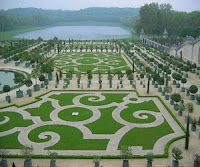Francisco Pizzaro conquered Peru in 1535. Lima was Spain’s largestAmerican colony. In Peru, there is a lot of Spanish influence in architecture, religion and customs, but Peru’s pre Spanish inhabitants (Incas and other native tribes) have an even longer richer history. Simon Bolivar from Venezuela and San Martin from Argentina liberated Peru from Spanish colonization on July 27th 1921.
Our next part of the Journey was our flight to Cusco. This city is the highest in Peru at 13,000 feet above sea level. This was the ancient capital of the Incas. Here the Inca king ruled his empires that stretched across the highlands.The highlight was the trip up to Machu Picchu, which is currently celebrating its 100-year anniversary of discovery. Though many local inhabitants knew this location, it wasn’t until an American adventurer in 1911 with the help of National Geographic re-discovered it, began preservation, and turned it into a tourist attraction. Known now as one of the Seven New Wonders of the World. To get there was quite a journey: 2 hour car drive, 1.5 hour train ride, 30 min bus ride and then we arrived in the ancient city surrounded by the Andes mountains. What a site to see- nothing can describe the detail and beauty that this ancient site holds. Many scholars believe the main purpose of the city was for religion, astronomy and retreats for the king. The level of detail and architecture is amazing. After a long day of exploring, we relaxed in the village of Aguas Calientes surrounded by jungle before our long journey back to Cusco.



Our trip began in Lima, Peru.Lima is the capital of Peru. The first most amazing observation about this city was the amount of drivers on the road and insane traffic. There is no underground subways or train systems because of the frequent earthquakes which makes vehicles the main method of transportation. Needless to say, the cars drive fast and there are no lanes, which creates a pushing your way to the front of the line atmosphere. Lots of horns!
The main plaza is named after San Martin in the city center. There you will find the Presidential Palace, the main cathedral, archbishop’s palace and City Hall. The most modern part of the city is along the coast in the area call Miraflores. It is located on the Pacific Ocean and has great shopping and culinary restaurants.
Our next part of the Journey was our flight to Cusco. This city is the highest in Peru at 13,000 feet above sea level. This was the ancient capital of the Incas. Here the Inca king ruled his empires that stretched across the highlands.The highlight was the trip up to Machu Picchu, which is currently celebrating its 100-year anniversary of discovery. Though many local inhabitants knew this location, it wasn’t until an American adventurer in 1911 with the help of National Geographic re-discovered it, began preservation, and turned it into a tourist attraction. Known now as one of the Seven New Wonders of the World. To get there was quite a journey: 2 hour car drive, 1.5 hour train ride, 30 min bus ride and then we arrived in the ancient city surrounded by the Andes mountains. What a site to see- nothing can describe the detail and beauty that this ancient site holds. Many scholars believe the main purpose of the city was for religion, astronomy and retreats for the king. The level of detail and architecture is amazing. After a long day of exploring, we relaxed in the village of Aguas Calientes surrounded by jungle before our long journey back to Cusco.


The last part of the trip was a journey through the sacred valley. It’s called the sacred valley because the land is very fertile perfect for growing over 5000 varieties of potatoes and 400 varieties of corn. The terrace farming is what the Incas were known for. You can see them all through the highlands. The terraces are built into the mountains for aesthetics reasons and also to help prevent landslides. We visited 3 ancient ruins (Pisac, Ollantaytambo, and Chinchero) all in the Sacred Valley. All were very detailed and breathtaking. These ancient cities had terraces built into the mountains in the design of the Andes sacred animals: Condor, Puma and Llama.
Peru showed us a mixture between old, new, rich and poor. The people, culture and geography were all interesting and added to our understanding of Latin America.










































